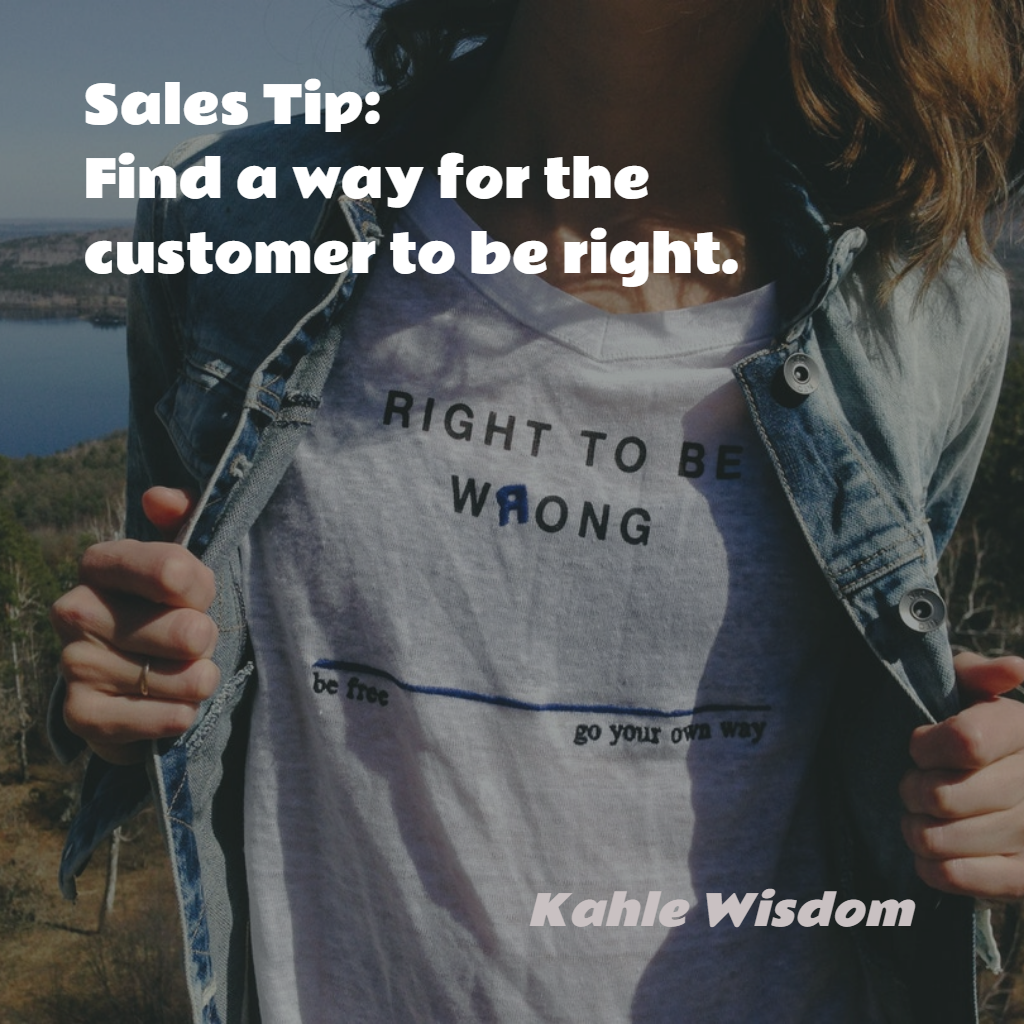By Dave Kahle
It’s the moment that many sales people dread. You’ve asked the customer to do something – give you an appointment, issue a P.O., or schedule a demonstration and, instead of saying “Yes,” the customer gives you a reason why he/she does not want to do what you’ve asked him or her to do.
During all the interaction before this, the customer and you have been on the same wavelength. You’ve found something you have in common, and you’ve jointly uncovered and analyzed some pain. Now, however, the nature of the interaction has changed. From a cooperative, give and take atmosphere, a hint of conflict now appears. You want him to do something, and he doesn’t want to do it.
It’s an objection.
What do you do?
Here are three keys to effectively handling the objection.
One: Preparation.
Objections are a natural part of the sales cycle. If you are going to talk to customers about your product and service, you are going to hear objections.
I know your product is terrific, and everyone should buy it. But people and companies are different; they don’t always think like you do. They may see the situation differently. Rather than being stunned into quiet confusion by an objection, think it through and prepare for it beforehand.
After just a little experience with a product or service, you can anticipate the most common objections you are likely to hear. Spending a few minutes thinking about and preparing for your most common objections will provide you with a great deal of confidence.
This isn’t as intimidating as it may seem. A few moments spent thinking about the objection and how you will handle it can make a huge difference. If you are prepared, you’ll find yourself being more confident, and actually looking forward to the objection.
Sit down in your office with a blank sheet of paper or a computer screen, and ask yourself, “If my prospect says this…, how should I respond?” Create a short 3 – 5 item outline. Then craft some powerful language that you may want to use, and finally think about what “proof” you can supply which supports your position.
With just a few moments of this kind of preparation, you’ll be ready for almost any objection you are likely to hear.
Two: Attitude.
For many sales people, the natural reaction to an objection is either to argue, or to leave. Neither confrontation nor flight is effective. Rather, welcome the objection. It means that your customer is working with you and respects you enough to tell you why he/she isn’t ready to do what you want them to do. That’s a good thing.
“Overcoming objections” is a phrase that we’ve all seen frequently. It helps encourage an attitude that I think is unhelpful. I’d rather you think about handling, not overcoming. Overcoming implies that you are going to struggle with the customer and eventually win. In any struggle, there is a winner and loser. So for you to overcome, your customer has to lose. If you enter into this phase of the sales process with the attitude that you must struggle with the customer, that attitude will show itself. Your customer will become defensive, and potentially harden his position – creating exactly the opposite impact than that which you want.
The opposite is also true. If your attitude is open and collaborative, it will show as well. Your attitude should be that you and the customer are in this together, seeking ways to agree, and that you welcome and accept the customer’s thoughts. This creates sincere interest in you, and your customer responds with a softer attitude as well.
Three: Implementation.
Your tactical response at the moment in which you react and respond to the customer is very important. Those moments in which objections are exchanged are often tense moments, when saying or doing the wrong thing can blow the sale. Treat the customer aggressively, say a couple of wrong words, appear unconfident – all these things can trigger a negative and harder reaction by the customer. So attention to the details of techniques of implementation is important.
Here are a few suggestions regarding tactical implementation:
- Always keep the other person’s ego in mind. Find a way for the customer to be right.
- When in doubt, ask a question. It buys you time to think, gets the customer talking, and almost always provides new information for you.
- Watch your language. Words like “yes, but…” signal that you differ from your customer, and put him/her on edge.
The list of specific tactics can go on and on, but you have the idea. The few moments of interaction that surround an objection are often the most potent in the entire course of the sales process.
If you are going to catapult your sales performance to higher levels, focusing on effectively handling objections will take you part of the way.
Originally published on davekahle.com
About the Author:
Dave Kahle is one of the world’s leading sales authorities. He’s written ten books, presented in 47 states and ten countries, and has helped enrich tens of thousands of sales people and transform hundreds of sales organizations. Check out our Sales Resource Center for 455 sales training programs for every salesperson at every level. To connect to the Sales Resource Center use this link:
http://www.thesalesresourcecenter.com
source http://www.commence.com/blog/2018/01/03/three-keys-to-handling-objections-effectively/



No comments:
Post a Comment